Greatest Gothic, #41: Jerónimos Monastery
How Portugal's Maritime Empire Shaped Gothic's Final Flourish
(8 min read) Jerónimos Monastery — number 41 in my countdown of the Fifty Greatest Works of Gothic — showcases the Manueline style, Portugal's unique contribution to late Gothic architecture.
(For more about this series, see the introduction and the countdown.)
Common Name: Jerónimos Monastery
Official Name: Mosteiro dos Jerónimos (Jerónimos Monastery or Hieronymites Monastery)
Location: Lisbon, Portugal
Primary Dates of Gothic Construction: 1501-c1600
Why It’s Great
Jerónimos Monastery epitomizes Manueline Gothic, perhaps the most distinctive final chapter of Gothic architecture.Its intricate sculptural program adds exotic architectural influences, nautical themes, botanical and oceanic motifs, and royal iconography to an Iberian Gothic base, creating a symphonic celebration of Portugal’s Age of Discovery.
Why It Matters: History and Context
My previous selection in this series was Laon Cathedral, which — as I discussed in its post — was a remarkably unified expression of early Gothic, with clean lines and simple forms.
Jerónimos Monastery presents a complete contrast to Laon in almost every way. It's a sprawling complex which was built in stops and starts, with multiple architects and sculptors making their marks over time. It also exemplifies the Manueline style, Portugal's eclectic architectural expression rooted in Gothic but incorporating a wide-ranging set of other influences — nautical design, Islamic and Moorish elements, Italian Renaissance features, and abundant oceanic and botanical motifs. If Laon Cathedral (and early Gothic in general) represents classic simplicity, then Jerónimos Monastery celebrates effervescent excess and decorative confection.
Named after King Manuel I (r1495-1521), the Manueline style coincided with Portugal's golden age of maritime exploration and discovery. As Portuguese navigators like Vasco da Gama established trade routes to India, Brazil, and Africa, unprecedented wealth and new ideas flowed into the small Iberian nation. Portugal's unique position at the crossroads of European, Islamic, and newly discovered worlds gave birth to an architectural language which celebrated the nation's seafaring triumphs.
Manueline architecture exuberantly incorporates twisted rope motifs, armillary spheres (a symbol of Manuel I), coral-like columns, and exotic details inspired by distant lands — all rendered in stone as permanent testaments to Portugal's role in the “Age of Discovery.”
Jerónimos Monastery was commissioned by King Manuel I in 1501, shortly after Vasco da Gama's successful voyage to India. Its location in near the mouth of the Tagus River was symbolically significant, as this was the departure point for countless Portuguese expeditions. Manuel dedicated the monastery to the Order of Saint Jerome (thus “Jerónimos”) and funded its construction with tax revenues from the lucrative spice trade with India.
The monastery's fortunes have ebbed and flowed with Portugal's own history since its completion — mostly ebbing, since Portugal’s height of economic and political power more or less coincided with Manuel I’s reign. It became a royal funerary momument in 1604, during the short-lived Iberian Union, and still houses the tombs of many members of royalty and other important Portuguese figures.
The monastery survived the devastating 1755 Lisbon earthquake with relatively minor damage, but experienced a profound disruption in 1833 when religious orders were dissolved in Portugal. It was subsequently repurposed as a school and orphanage before being recognized as a national monument in 1907.
Jerónimos Monastery gained international recognition in 1983 when it was designated a UNESCO World Heritage Site alongside nearby Belém Tower (see the embedded Substack Note near the bottom of the post).
Today, it is one of Portugal's most visited monuments, drawing visitors from around the world who come to marvel at its intricate stonework and experience the physical embodiment of Portugal's Age of Discovery. (And if you are interested in that period of history, the Maritime Museum is located in a newer wing of the monastery and well worth a visit; I’ve also included an embedded Note about it below the one on Belém Tower.)
The monastery complex centers around the church of Santa Maria de Belém and its magnificent two-story cloister. In the next section, we will follow the one-way path required of visitors through its elaborately carved cloisters and church and take in the creative energy and national pride that Portugal channeled into stone during its greatest historical moment.
Photo Tour
We begin our tour with the exterior (figures 6-10), and then go to the cloisters (figures 1, 4, 11-19) before finishing in the church (figures 20-29). I visited here on a sunny morning in early January, arriving not long after the sun rose. The beautiful golden sheen you see on most of my exterior photos are therefore the result of sunlight and not the true color. The stonework here takes on a distinctly white appearance by late morning and until the evening’s “Golden Hour.”
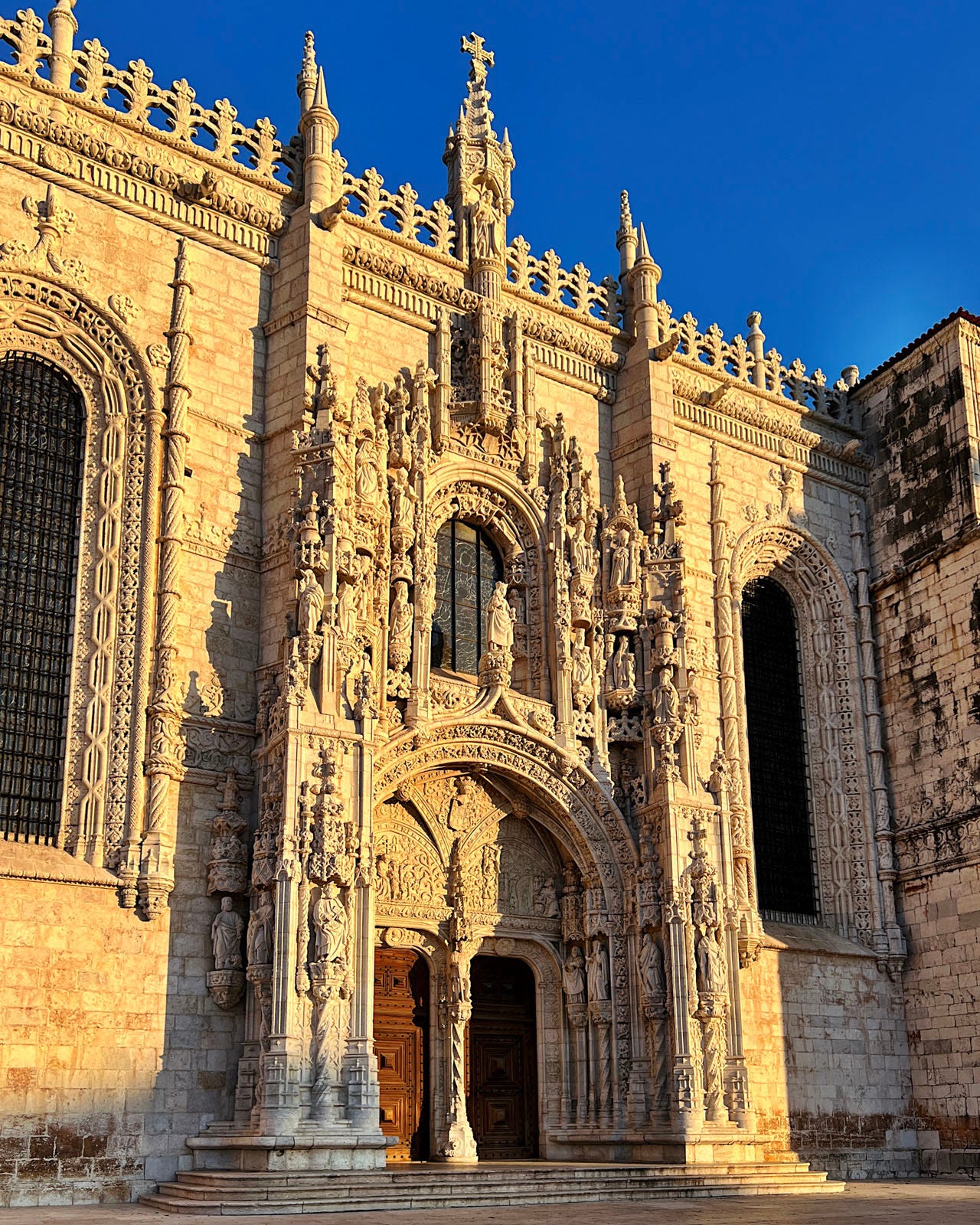
The tour route takes you to the upper floor of the two-story cloister, where you can appreciate the full scope of Manueline decoration and enjoy views across the courtyard. I did a number of detailed posts on the cloisters and their decorative elements on Instagram last year, and there are links to them near the bottom of this post if you’d like to see more.
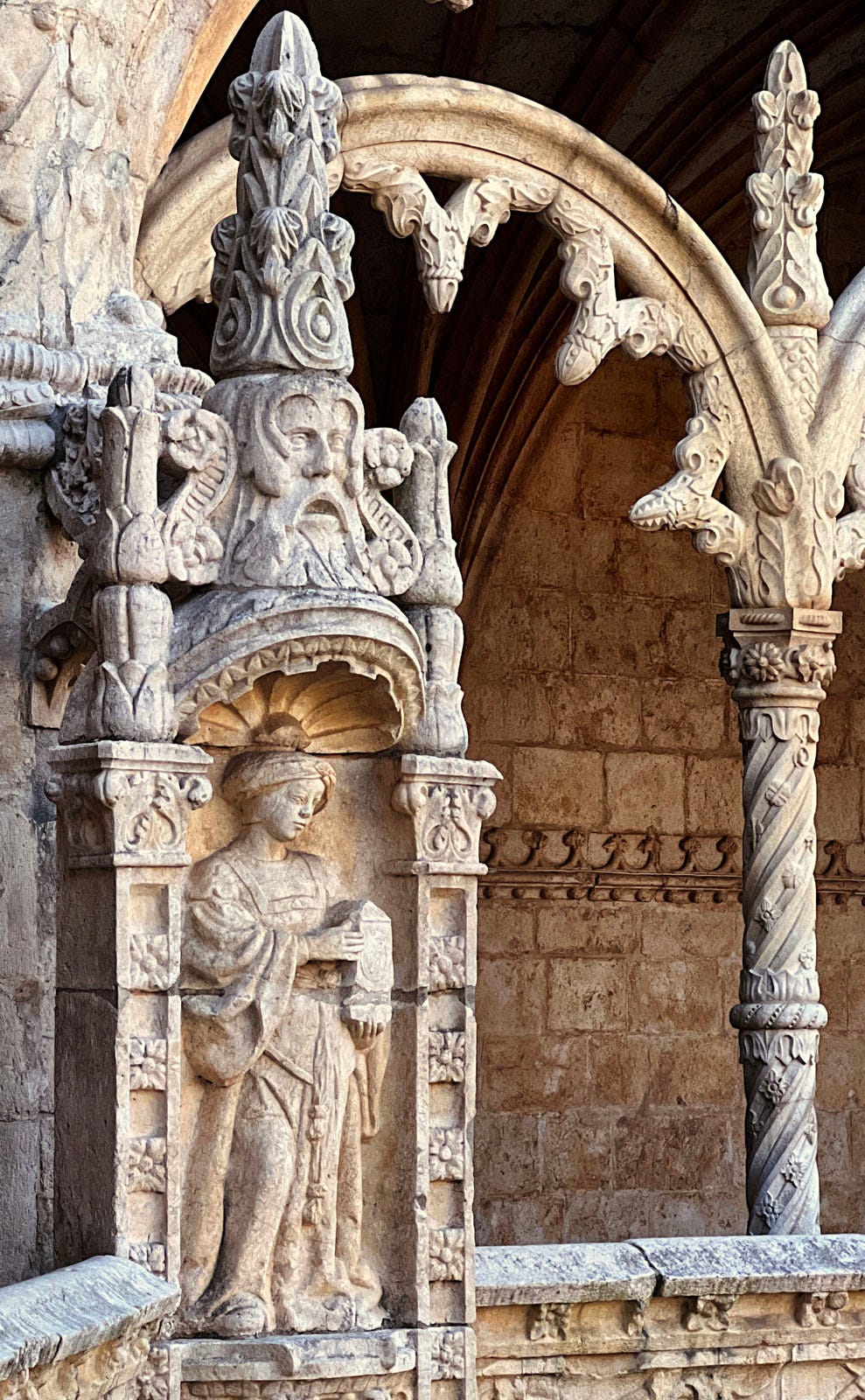
From the upper floor we descend to the ground level where there are several buildings to visit in addition to the wondrous arcade. Here the ornamental detail is even more accessible, allowing visitors to appreciate the craftsmanship that went into every carved rope, marine creature, and botanical element.

From the cloisters, the path takes us to the church. The west portal (figures 20-21) was sculpted by Nicolau Chanterene in 1517. This masterpiece of Manueline sculpture features religious figures alongside Portuguese royalty, celebrating both divine and national power in a single composition.
Entering the church, you find yourself in a space that is relatively dark by late Gothic standards, but the expressive detailing of the palm-tree-like columns and the complex web of ribbing overhead creates a sense of being inside an enchanted stone forest or perhaps beneath the hull of one of Portugal's great ships.
** Please hit the ❤️ “like” button❤️ if you enjoyed this post; it helps others find it! **
In Detail
Here are links to a few Instagram posts I did last year which show the cloisters and south portal in more detail:
Also, here are two recent Substack Notes which showcase nearby Belém tower and the Maritime Museum:
Visiting Advice & Conclusion
My Visit Date: 5 January 2023
This is one of the most popular sights in Lisbon, and it gets crowded quickly. If you want to visit it relative peace you will need buy your tickets in and show up well in advance of opening. I got in line 45 minutes before opening and there were still a few people in front of me.
Belém is several miles to the west of downtown Lisbon; if your time in Lisbon permits, I would suggest making a visit to the neighborhood last the better part of a day, as there are many things to in the immediate vicinity. In addition to the aforementioned Maritime Museum and Belém Tower, there’s the Monument to the Discoveries, built in 1940, a large modern art museum (Museum of Contemporary Art — MAC/CCB), and a smaller folk art museum (Museu de Arte Popular).
Jerónimos Monastery offers visitors something truly unique in the Gothic canon — a final, exuberant celebration of late medieval craftsmanship infused with the excitement of a nation expanding its horizons. Unlike the austerity of early Gothic or the mathematical precision of High Gothic, here you'll find an architecture that revels in organic forms, maritime references, and stories written in stone — a testament to how Gothic principles could be adapted to express a specific national moment - in this case, Portugal's emergence onto the world stage through exploration and commerce.


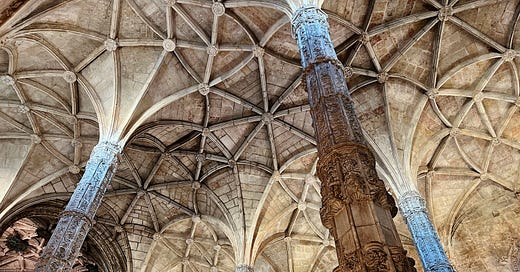


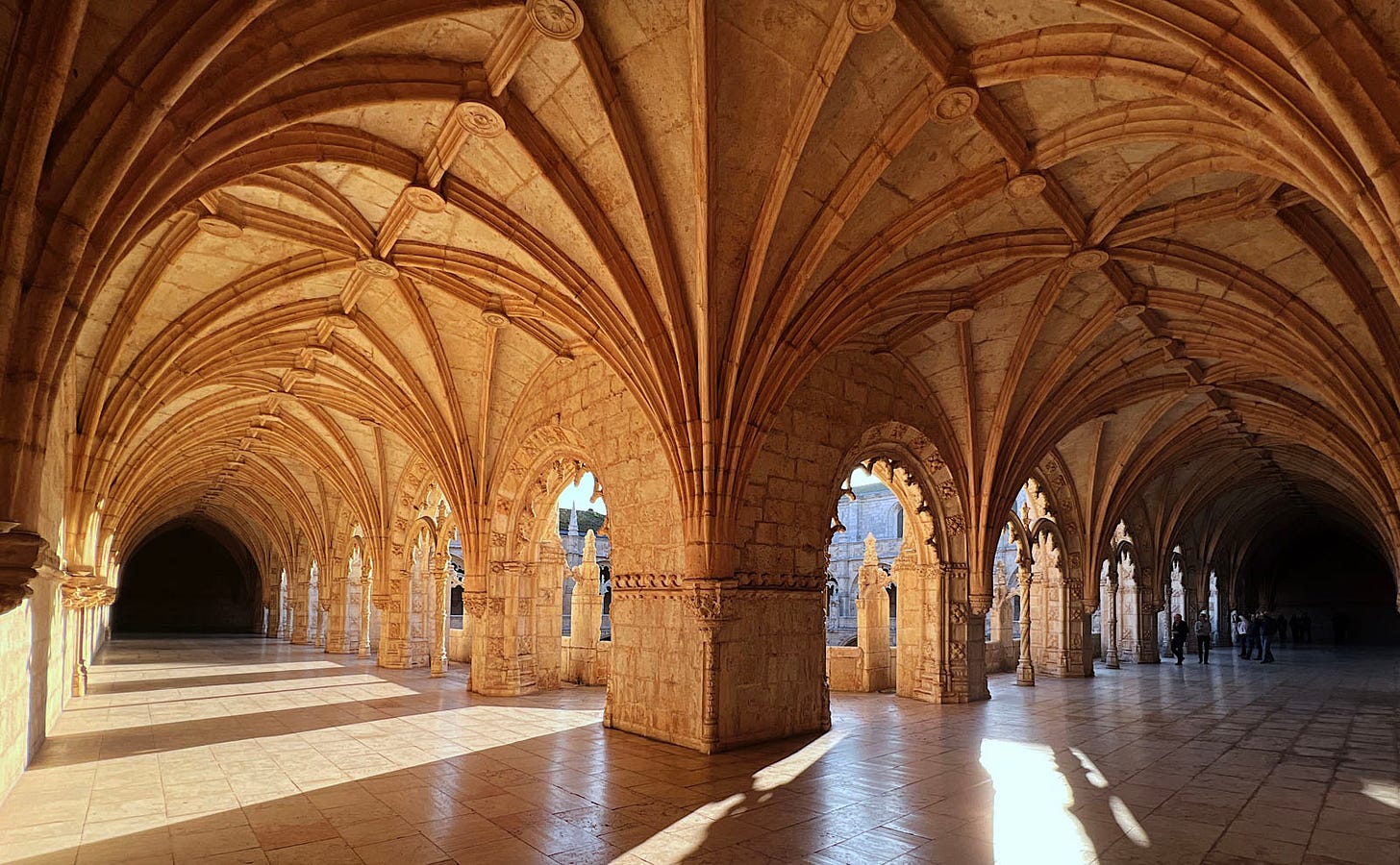
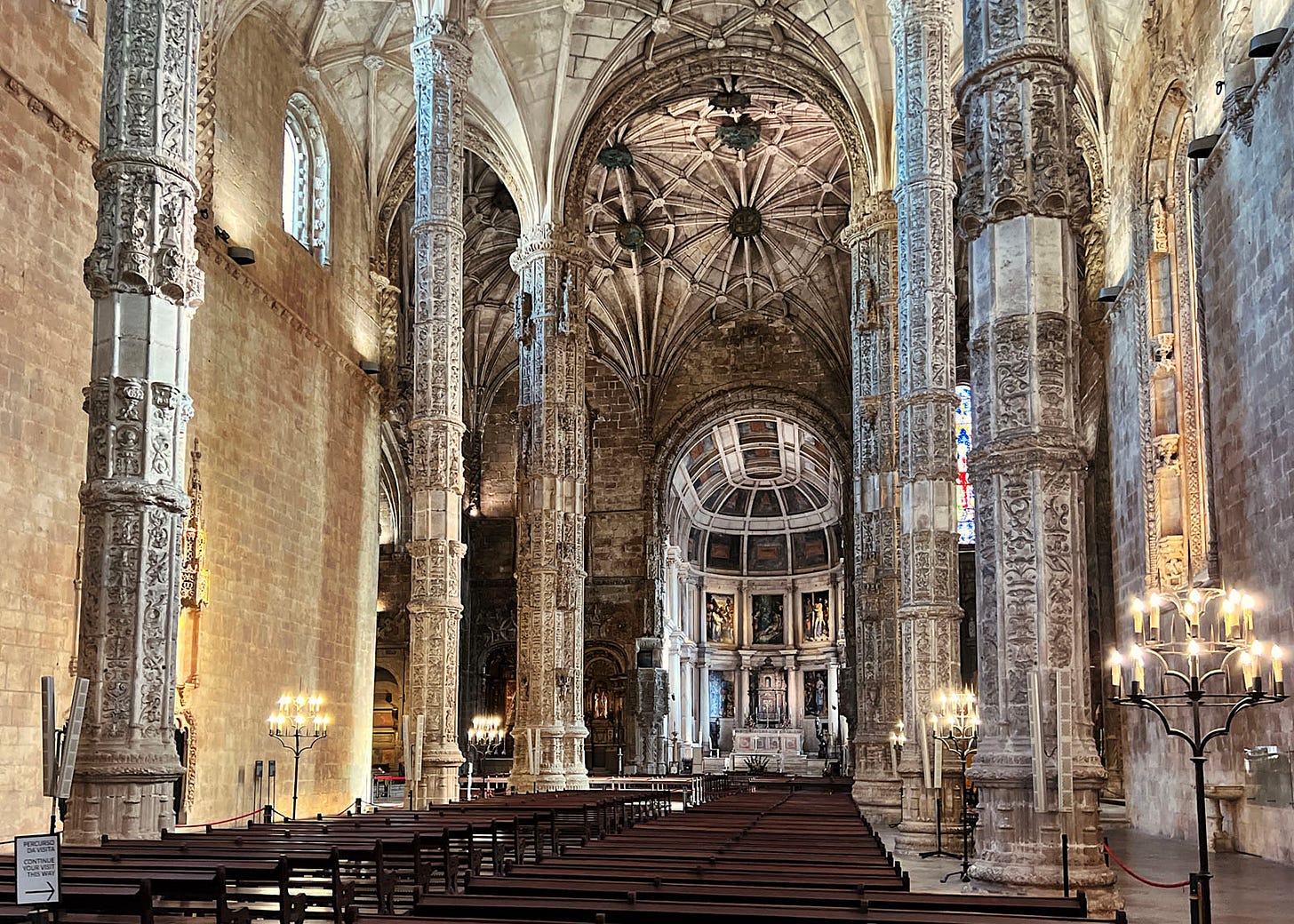
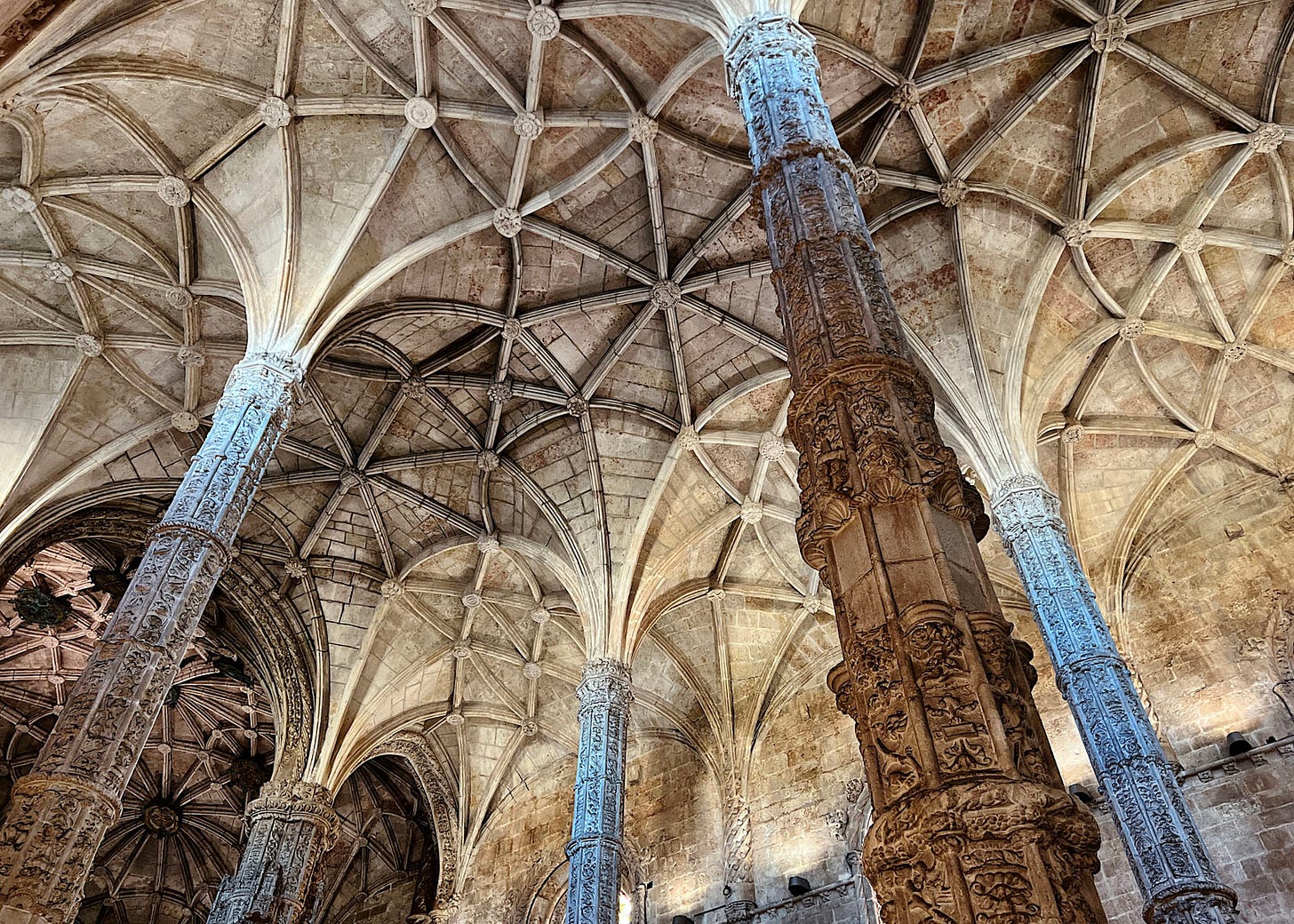
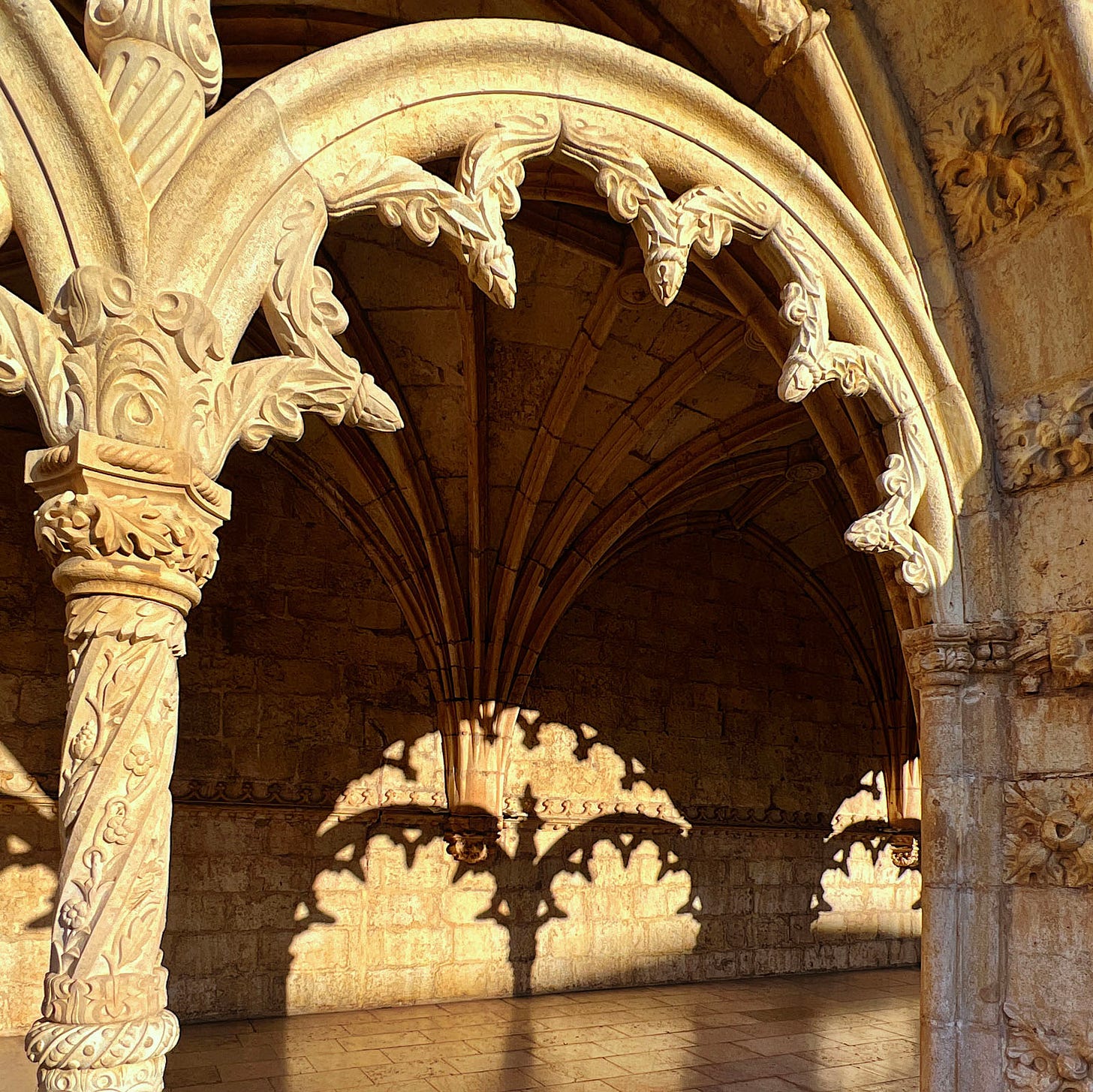
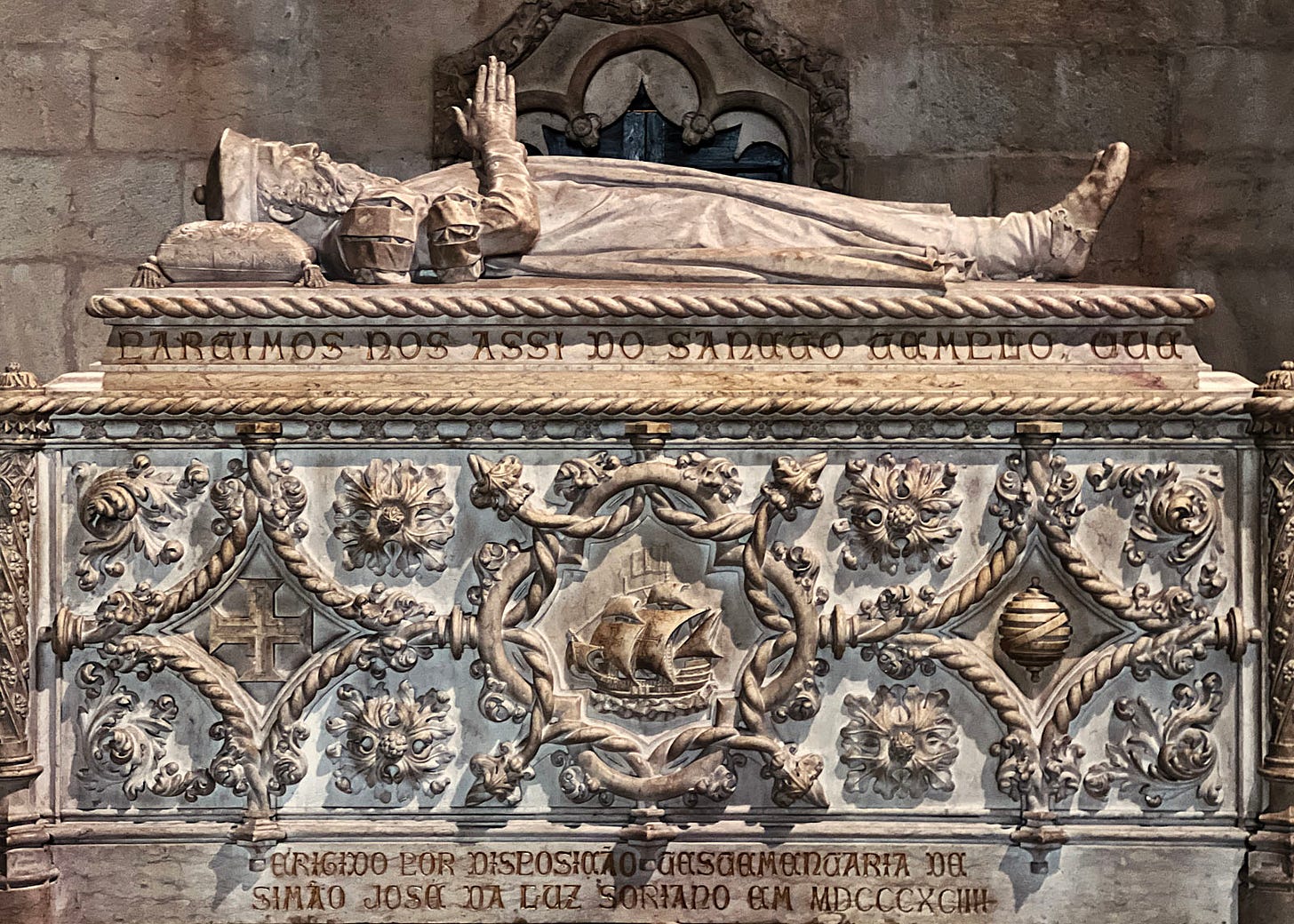

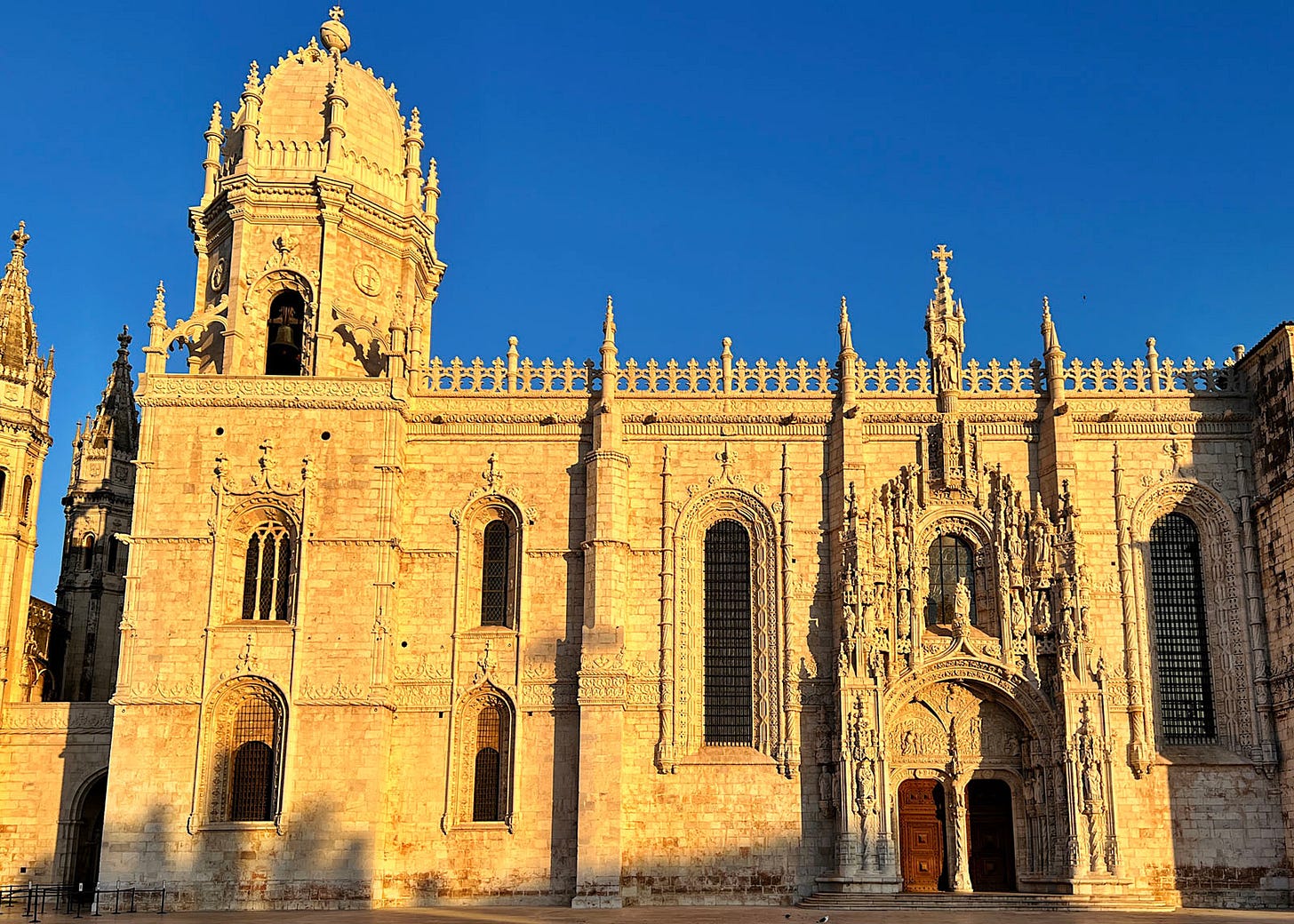
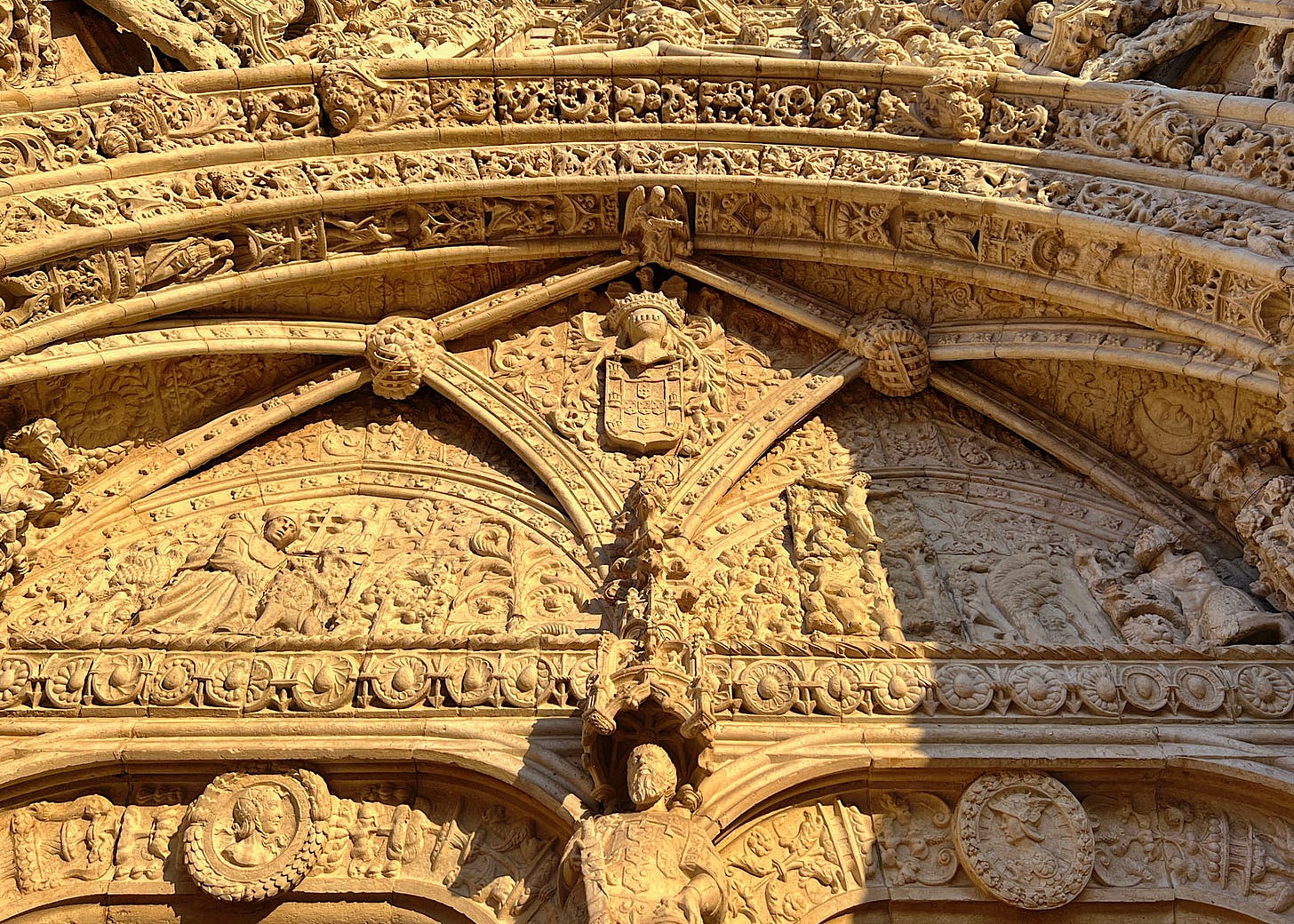
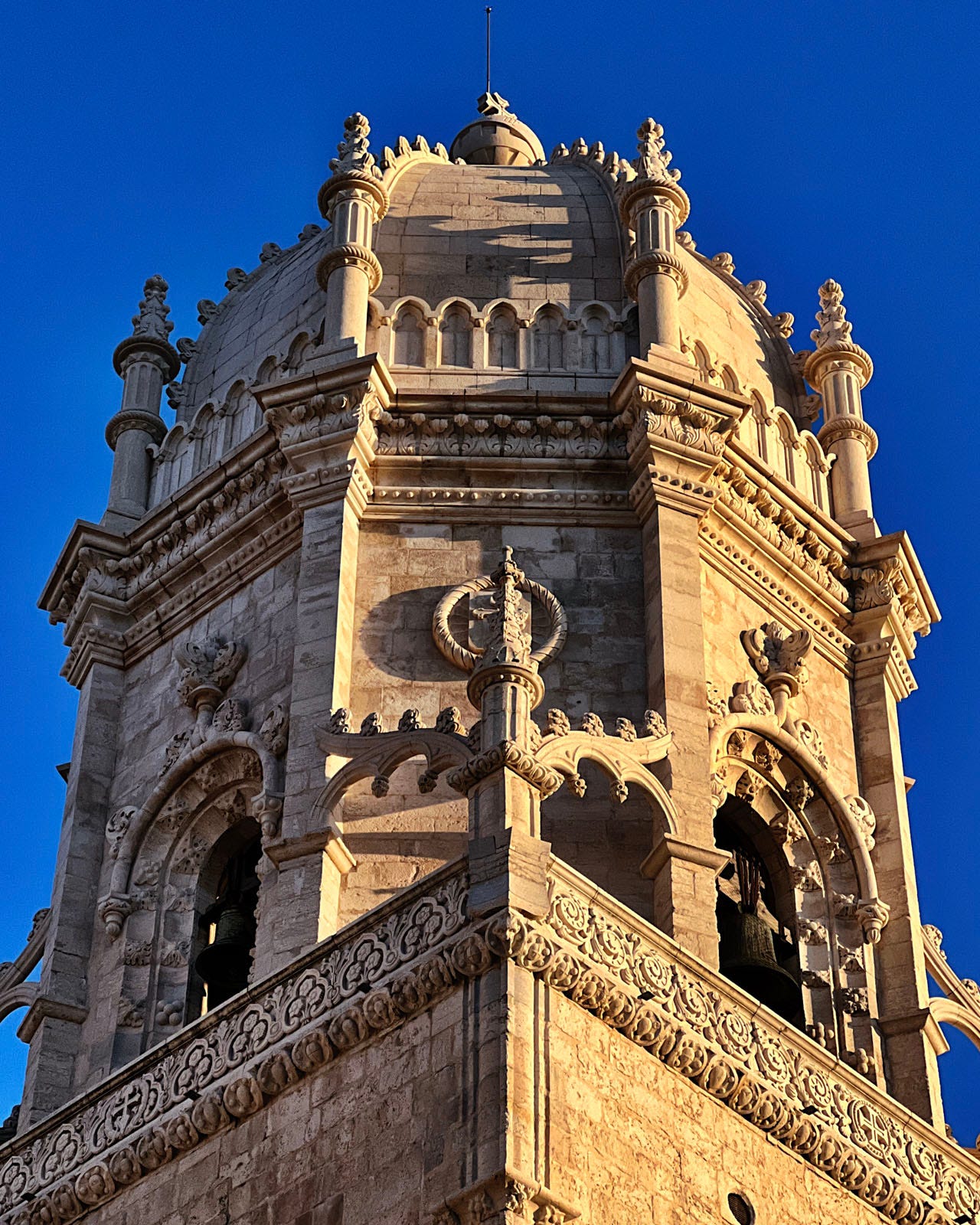
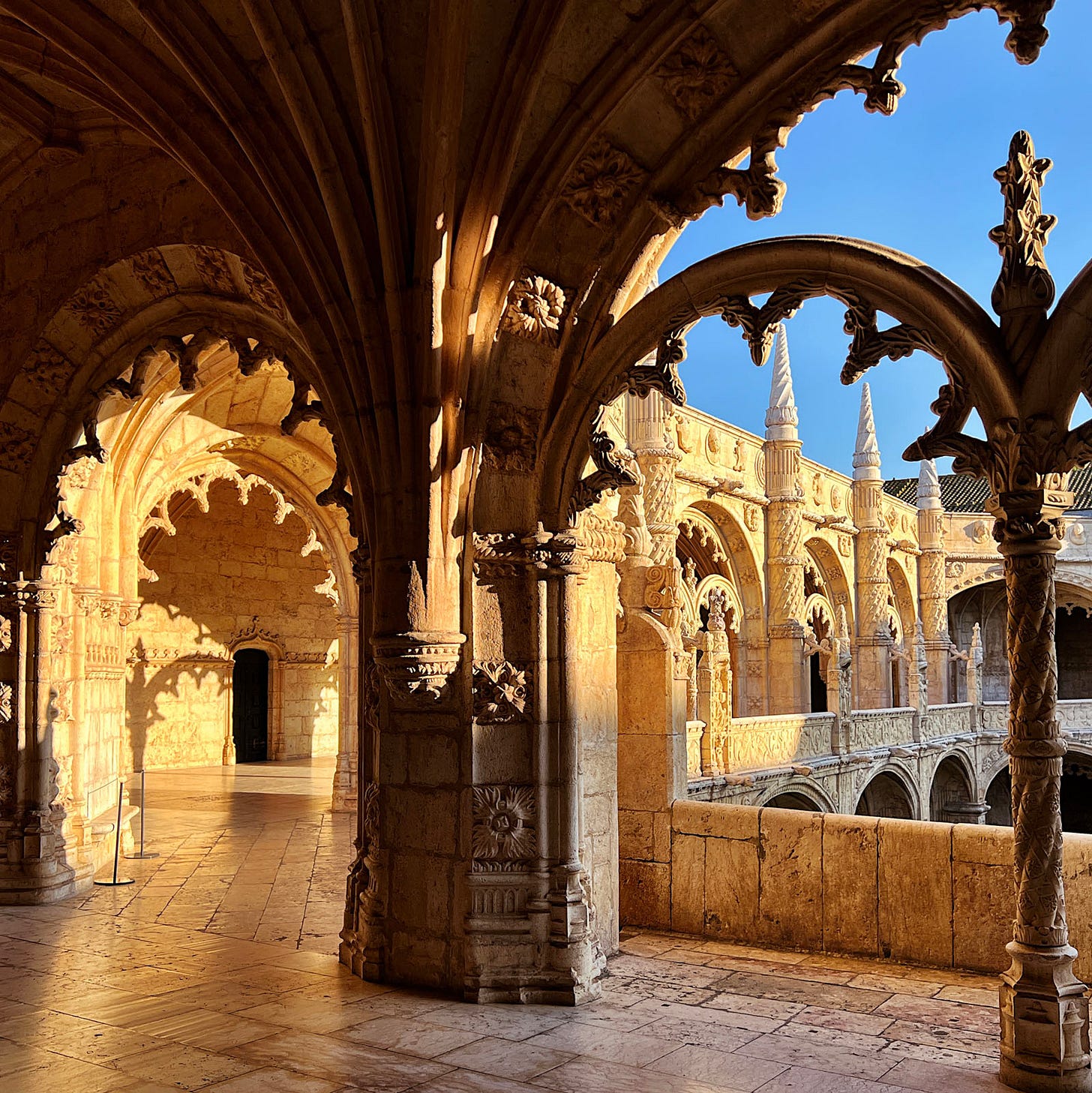

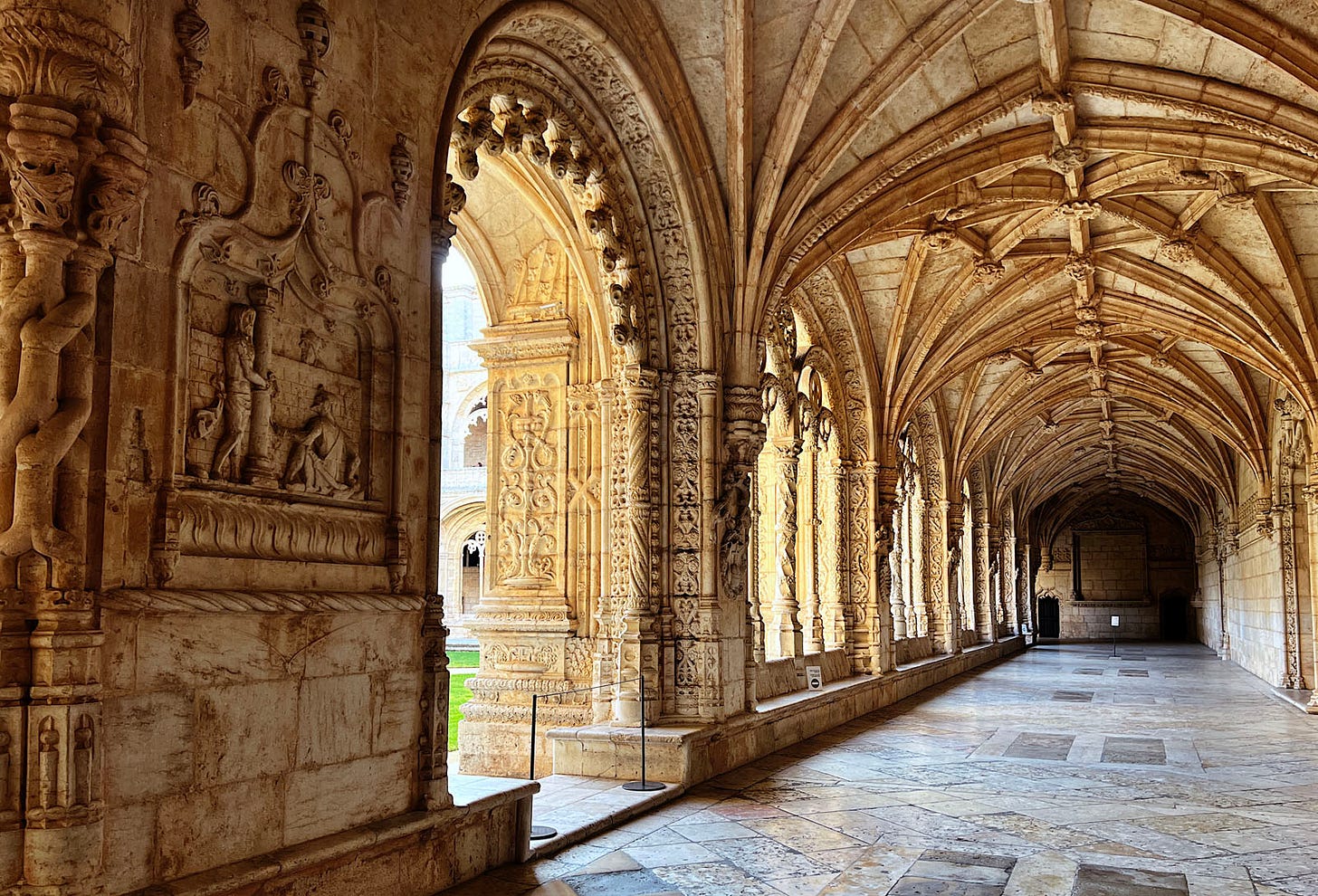


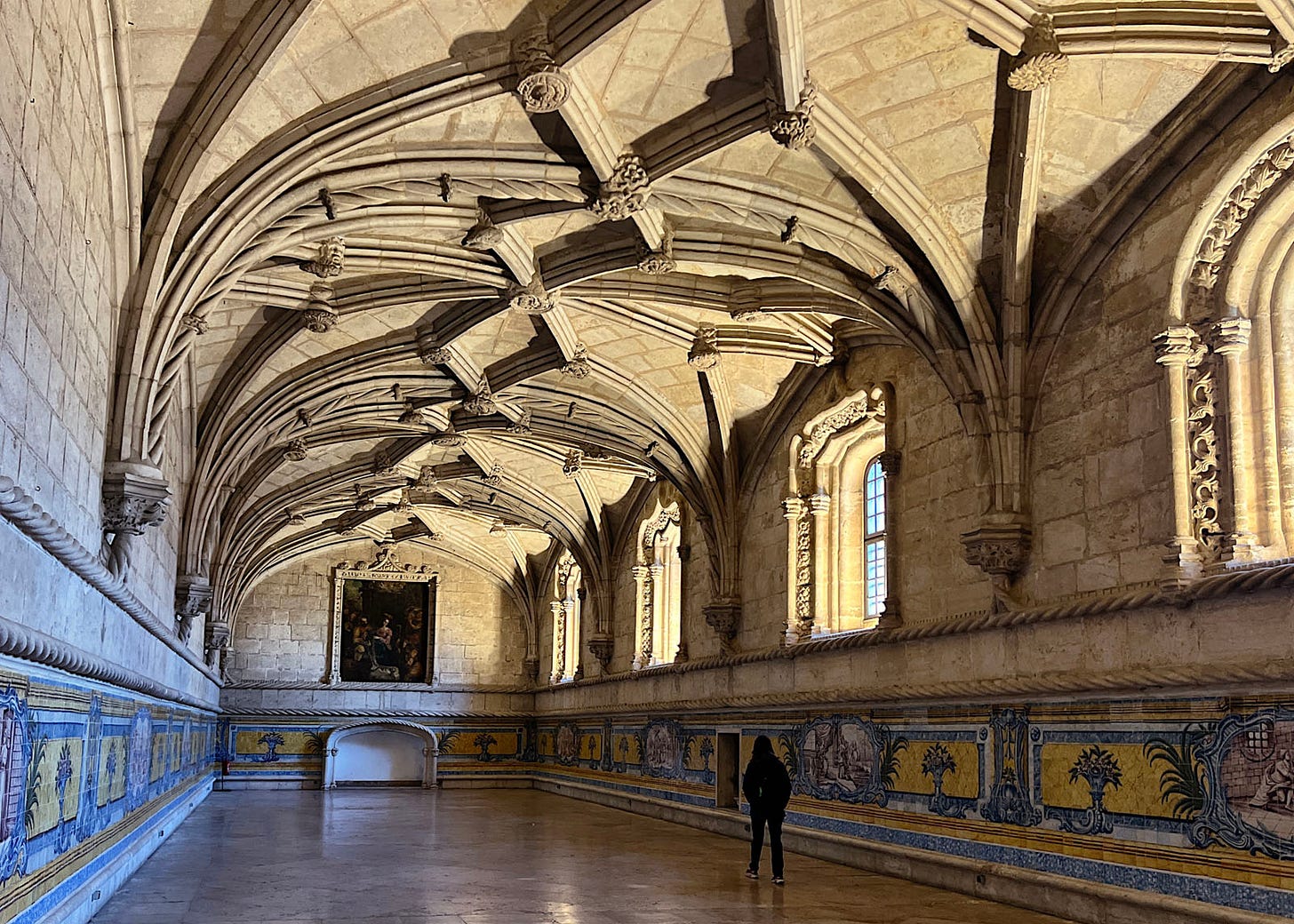
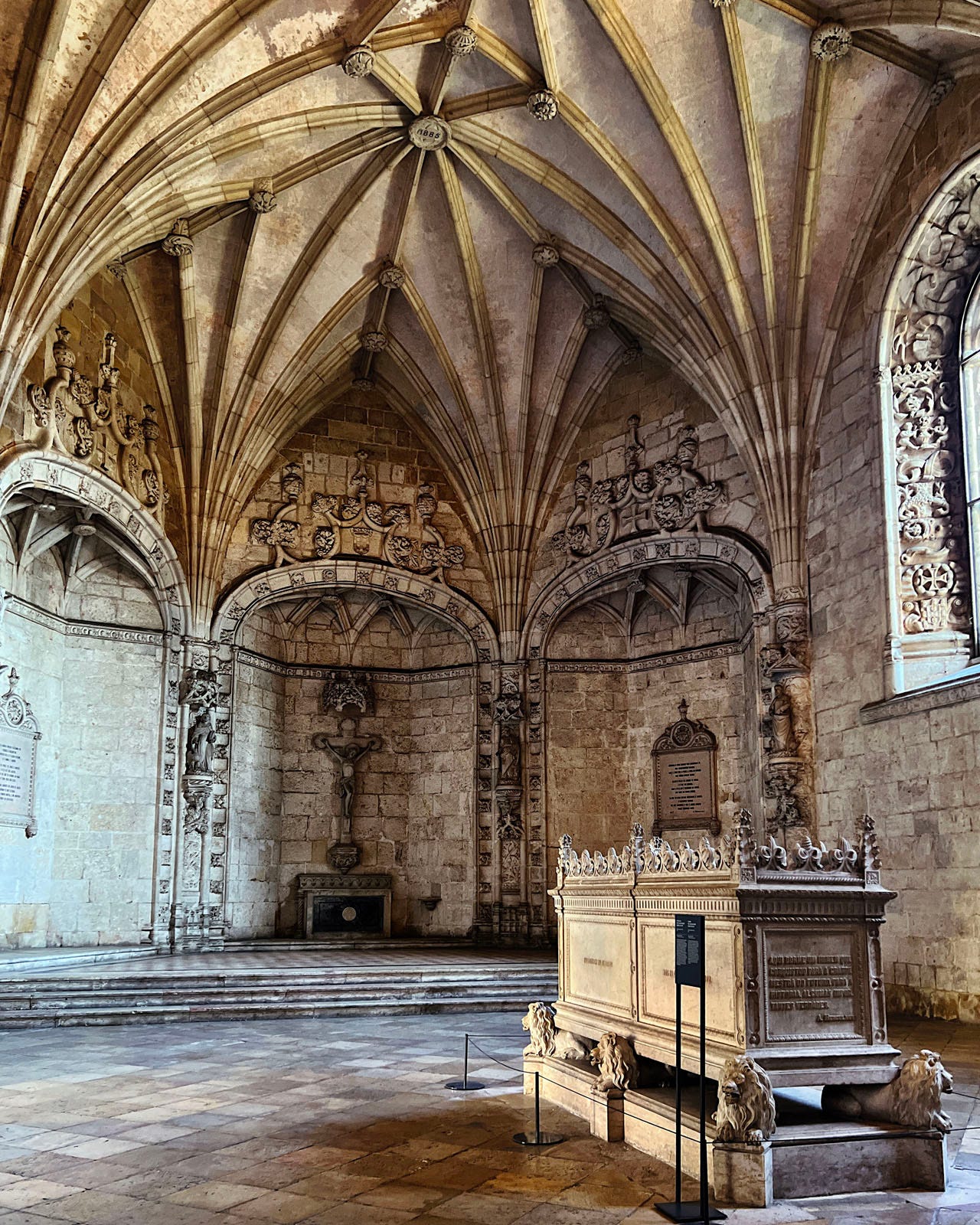
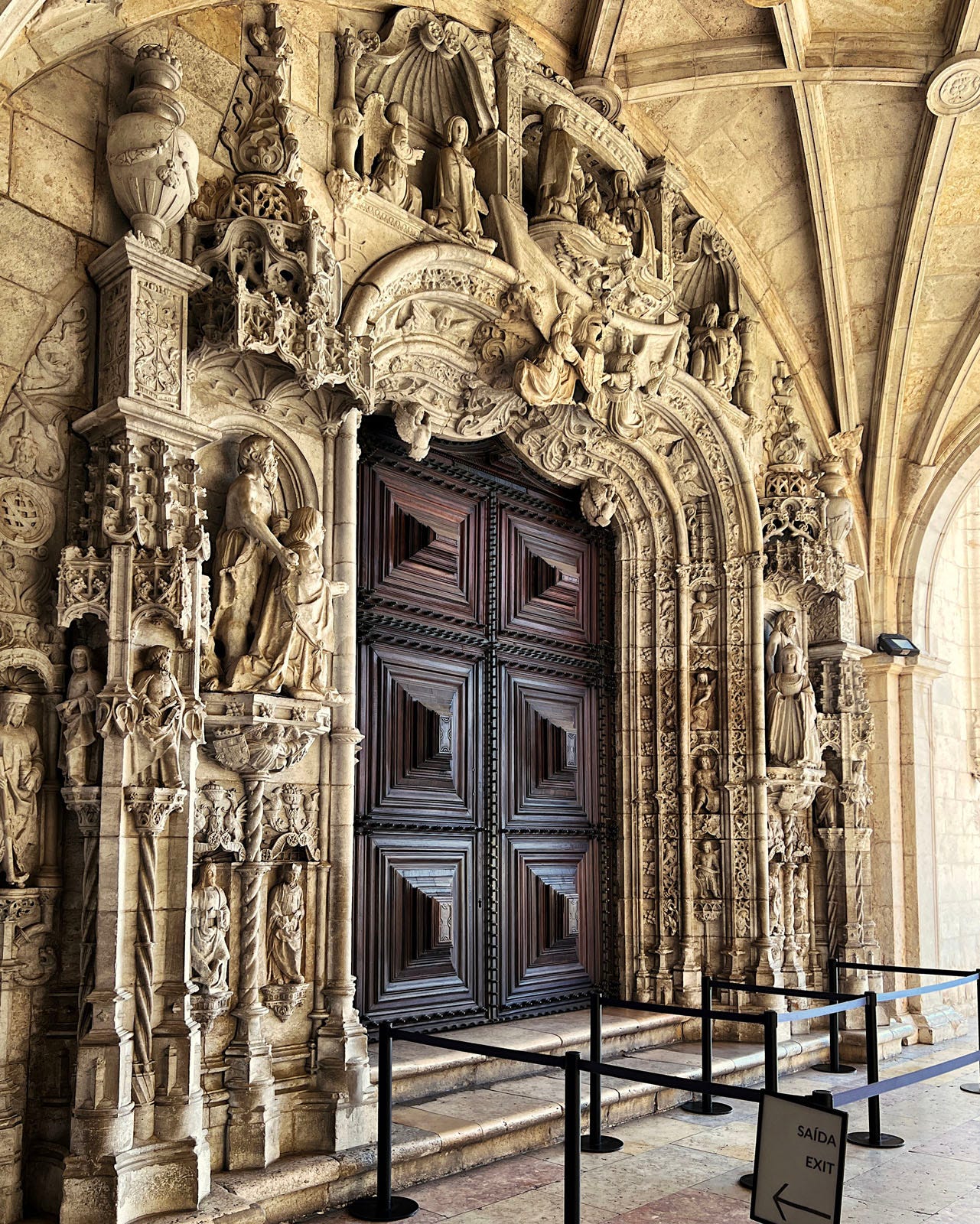
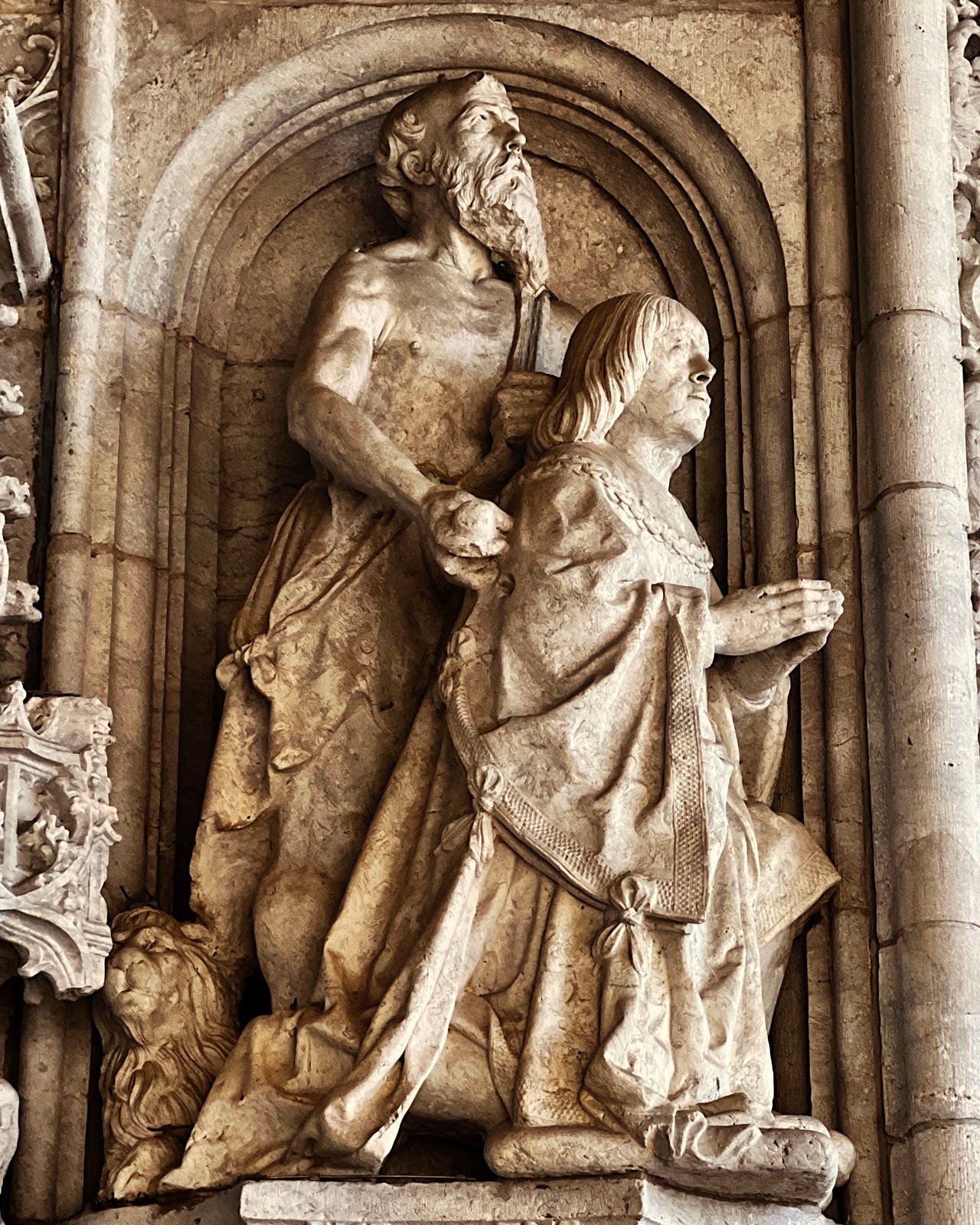
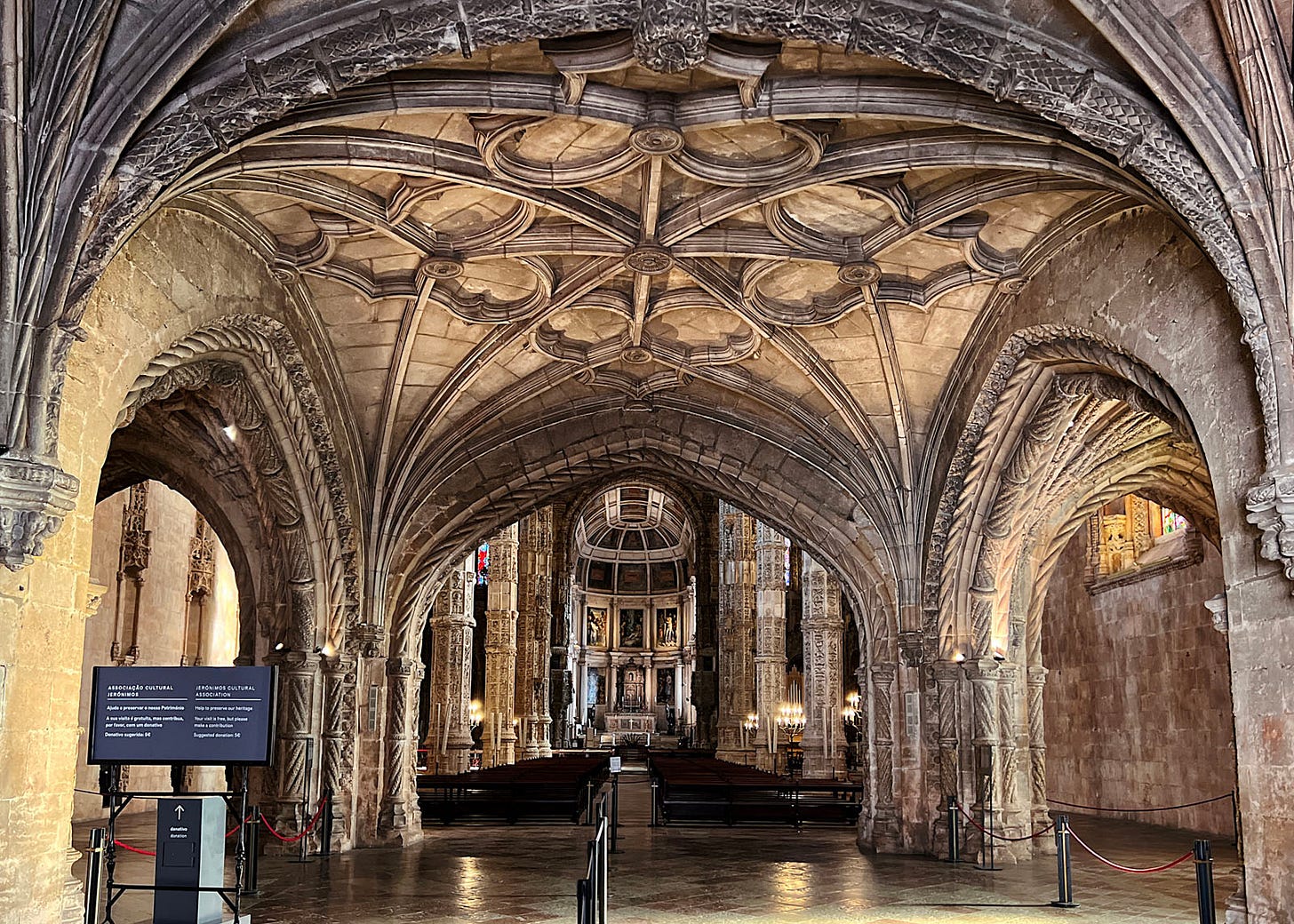
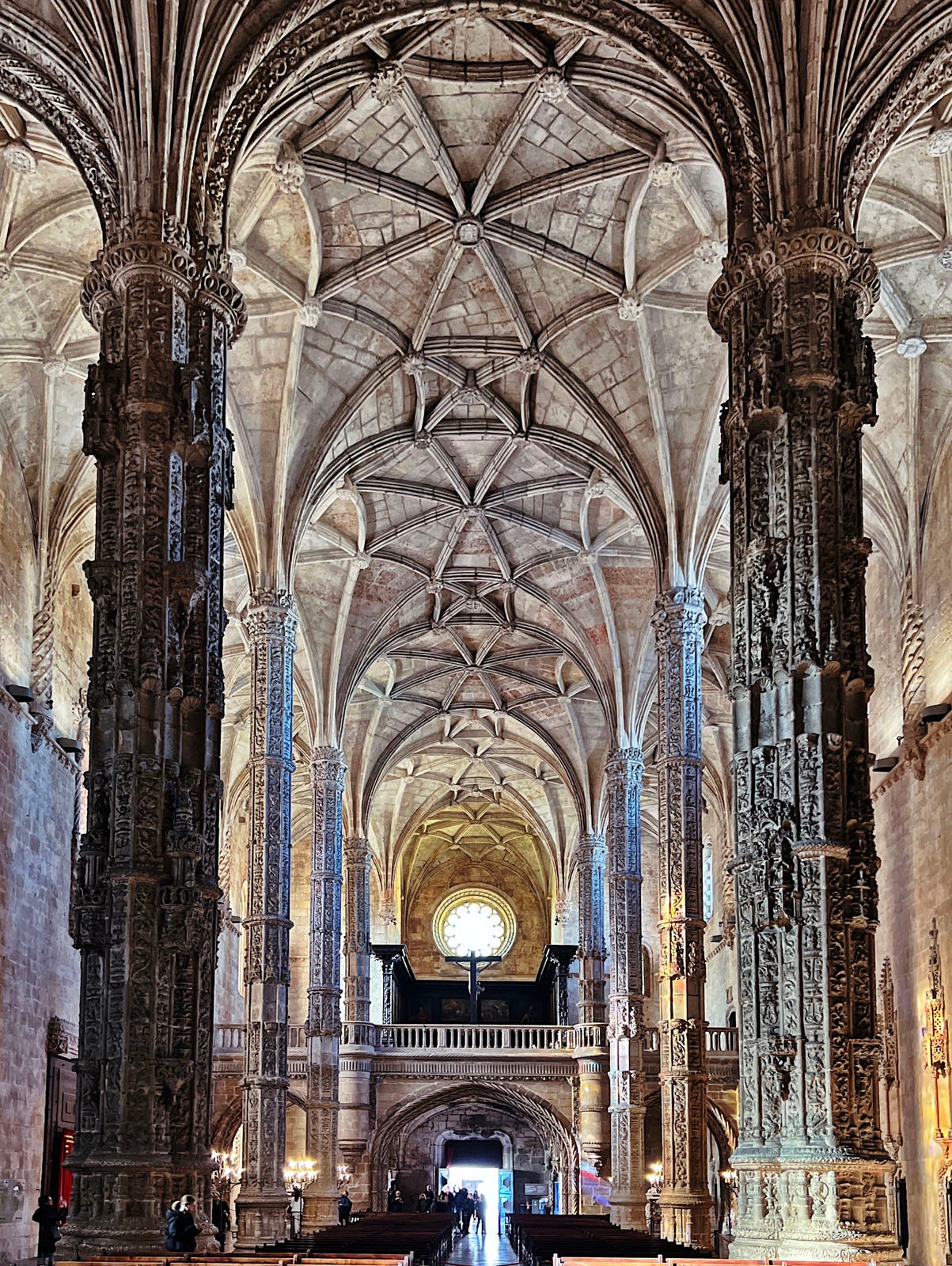
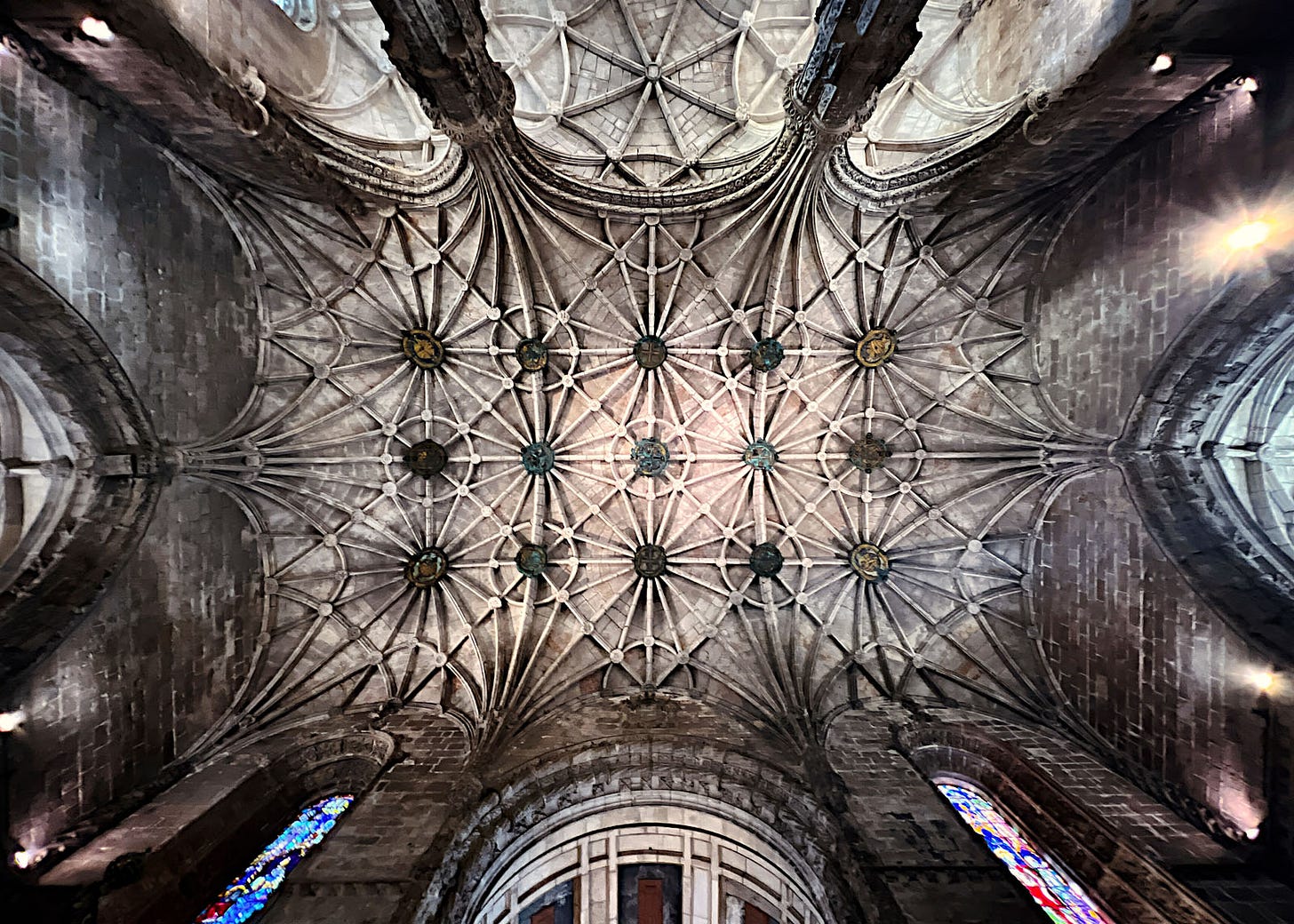
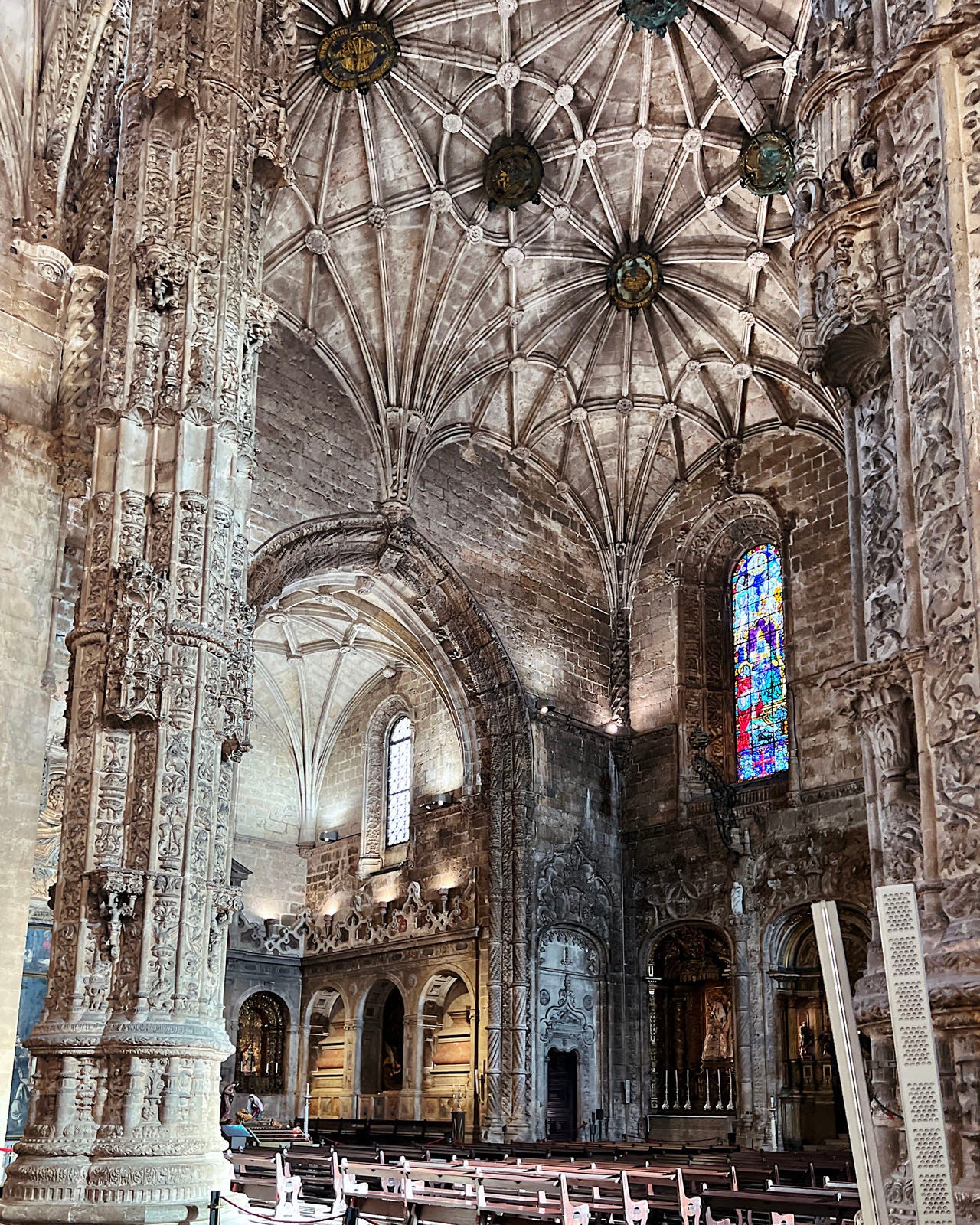
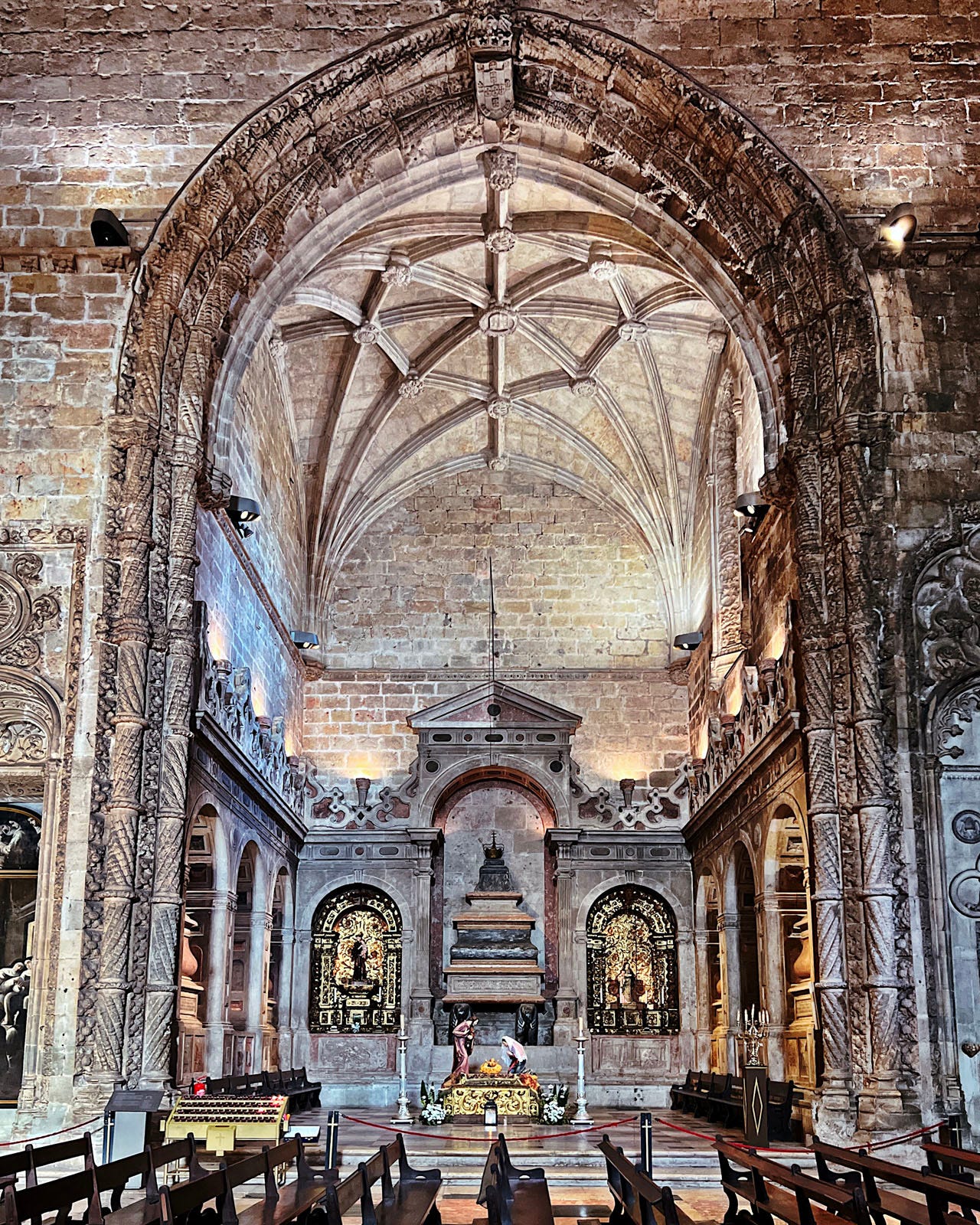
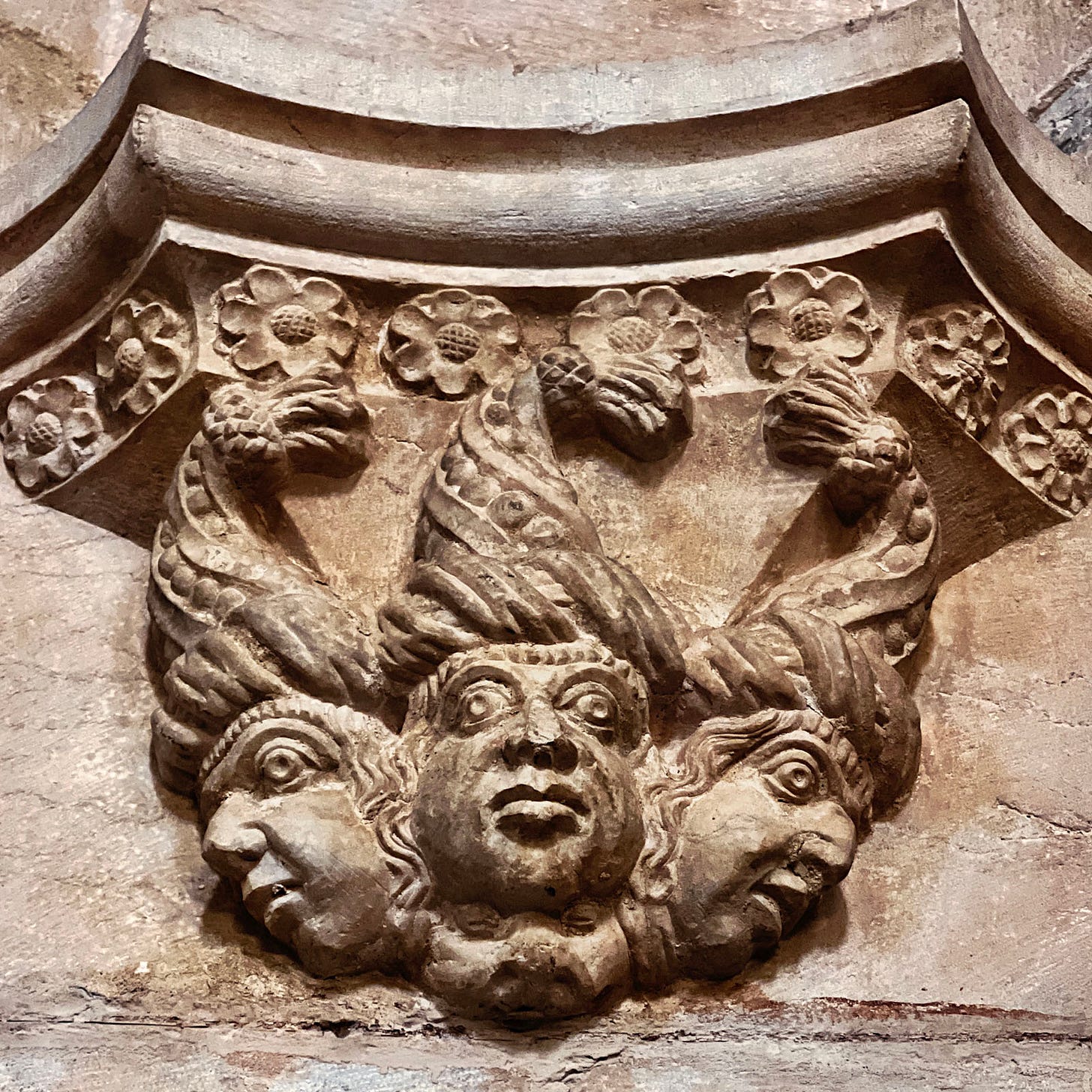
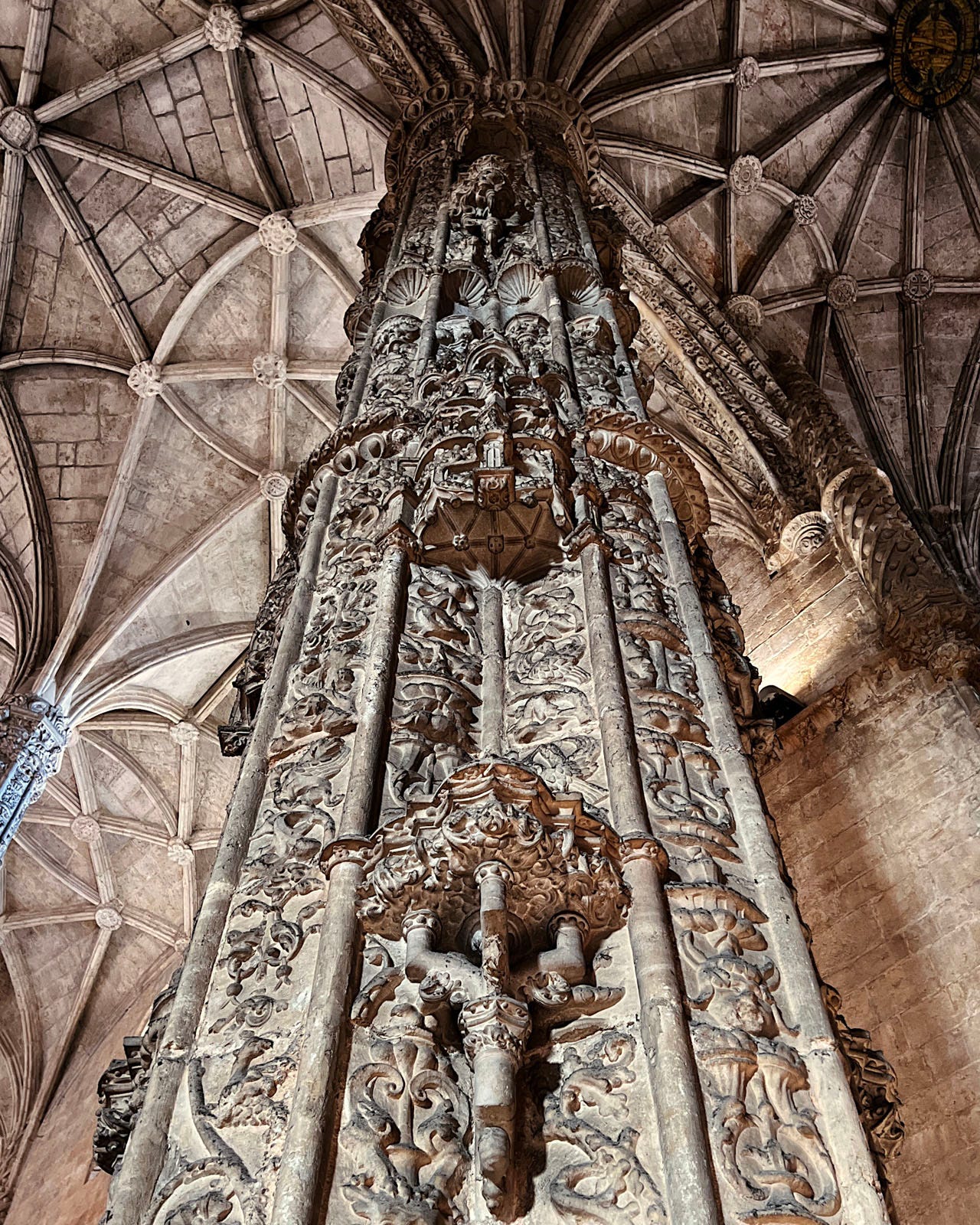
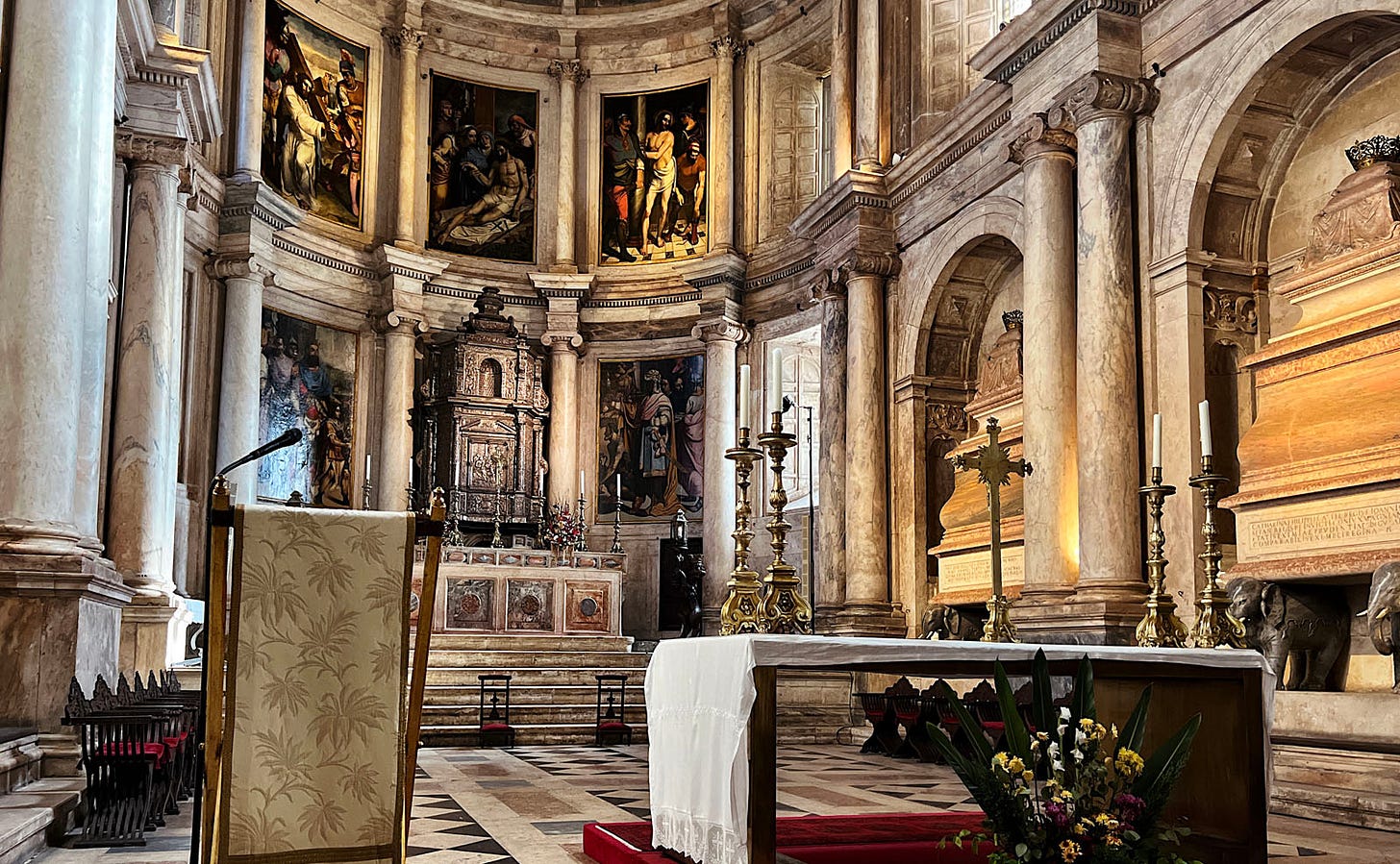
Confectionary is such a perfect encapsulation of this site! Manueline style is new to me, and your descriptions + gorgeous photos have only whetted my appetite to learn more, thank you!
So that’s where Vasco da Gama ended up! Thank you for more exquisite photos and another gothic show-stopper (and we are still only at number 41).